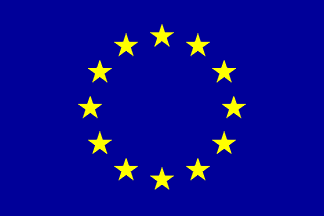We went ashore and the explored the town which has a large well preserved medieval castle. The story of the castle and walled town of Conwy begins in the year 1283. King Edward 1 and his English army had completed the conquest of Snowdonia and terminated the rule of the Welsh princes. On 18 January 1283 the capture of Dolwyddelan Castle gave Edward the control of the Conwy valley. English craftsmen and labourers reached a peak of 1500 strong in the summer of 1285, and within 4 short years this “the most magnificent of Edward 1's Castles" would be substantially complete. The cost to Edward of building Conwy was near to £15,000, indeed the cost of the five major Castles - Caernarfon, Conwy, Harlech, Cricieth, and Beaumaris - built after the war of 1282 - 3 and the revolt of 1294 was around £60,000. The total cost to Edward for his Welsh campaigns and Castle building was in the region of a third of a million pounds. More than ten times his annual income. That he went to the bank, the Riccardi Company of Tuscany to borrow the money (£122,000 between the years of 1276 and 1287 specifically to finance his Welsh campaign) this reveals a sophistication of the times of which I was previously unaware. It has been said that the increase in the banker's business due to the conquest of Wales was a considerable factor in the growth of international capitalism.
The Conwy suspension Bridge was designed and built by Thomas Telford the famous engineer (and a lot of people whose names I don't know); this elegant suspension bridge was completed in 1826 replacing the ferry. The Toll house has been restored and it is now furnished as it would have been a century ago.
There was much to see and do a week was not long enough to cram it all in. Many of the medieval houses were open and gave tours or contained exhibitions.
A local delicacy called an “oggie” (It looks like large pasty) made with lamb potatoes leeks and herbs they are delicious and two would feed a football team. The centre of much activity is the quayside. The local hostelry The Liverpool Arms (The LA) regularly provides live music outside day and night. Facing the pub the many fishing trips and river tours depart. To right of the LA the smallest house in Wales. To the left the chip shop wafts the smell of freshly cooked food along the front. There is a water taxi which can be hailed by VHF radio to collect you from your boat and drop you off at the quayside. The cost of this service was available for a pound for the weekend. On more than one occasion it proved to be unreliable. When it dropped us off at The LA he said the last taxi back would be about 11.45pm. We were there on time but it didn’t show. Twenty minutes later a man arrived and said the taxi could not leave yet please come with me to the sailing club and wait. We had no way of getting back to the boat so we went. We made lots of new friends and eventually got back to the boat at 3.30 am. On another occasion I could not get a reply on the VHF so we went down to the pub in the inflatable and tied it up to the end of the jetty. It was a beautiful night so we sat outside the pub having a drink. The water babbled as the large spring tide rushed in. We were there for less than hour and the water had risen so much that the inflatable had become out of reach. I had left a twenty foot painter. The water had travelled up the jetty making the inflatable out of reach. It was now moored halfway down the slip When we eventually recovered it and got in we could not release the rope from the jetty because the water was too deep. Instead I had to release from the inflatable end thus losing my favorite piece of rope. It could have been worse the tender tied up next to us had been sunk, dragged under by the short painter and the rising tide. We were new and the learning curve was steep. I was surprised how warm guano was on the bear leg after refusing to share food with a sea gull. (A man in pub told me that seagulls are colour coded if you are wearing something light the deposit is dark and if you are wearing something dark the deposit is light.)
Maiden Voyage page two







